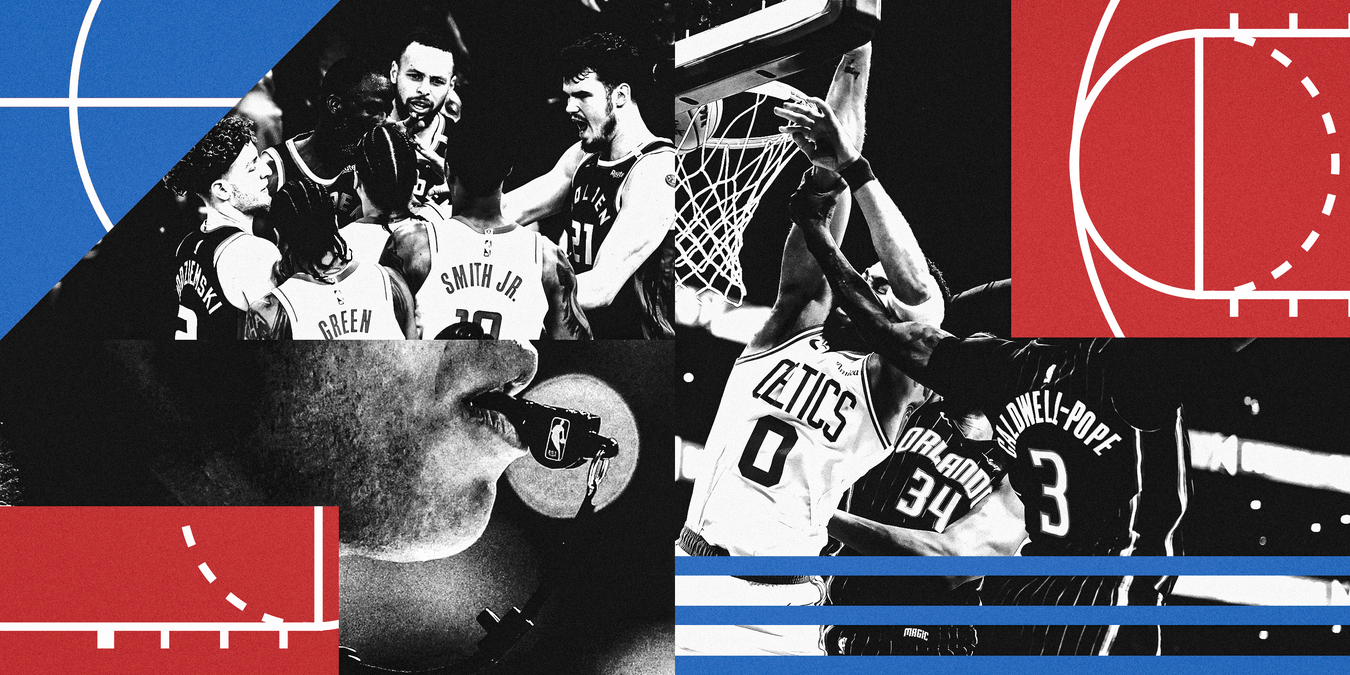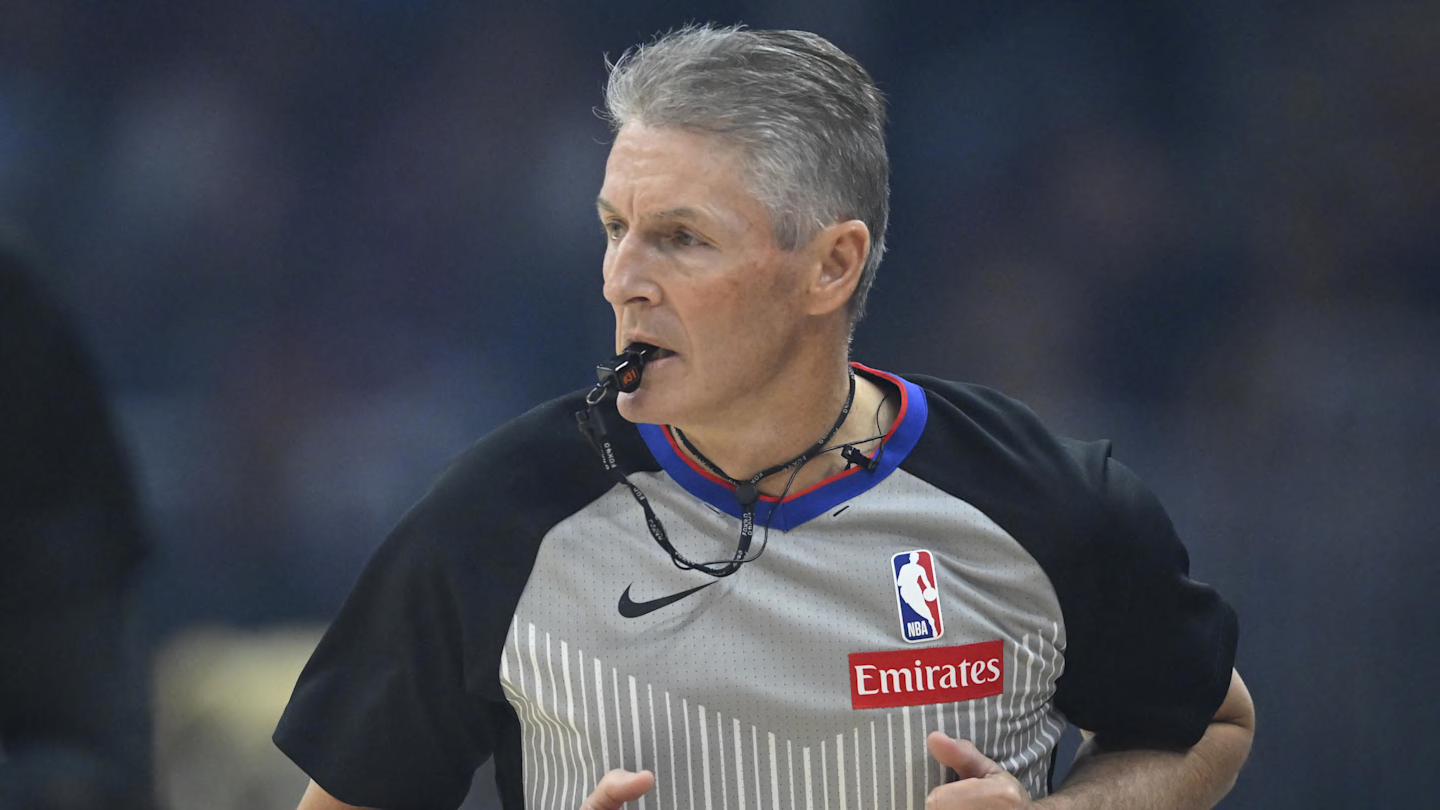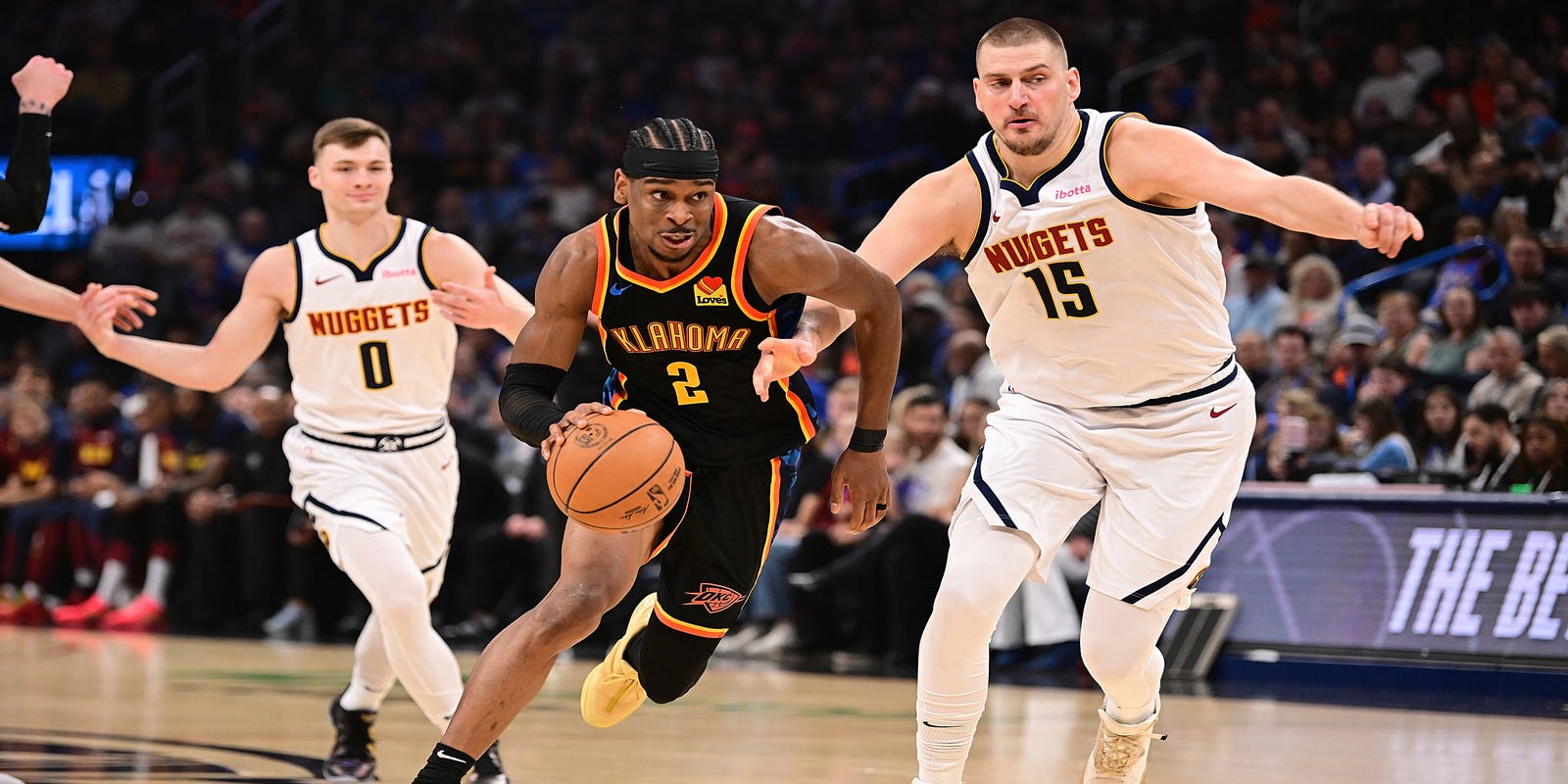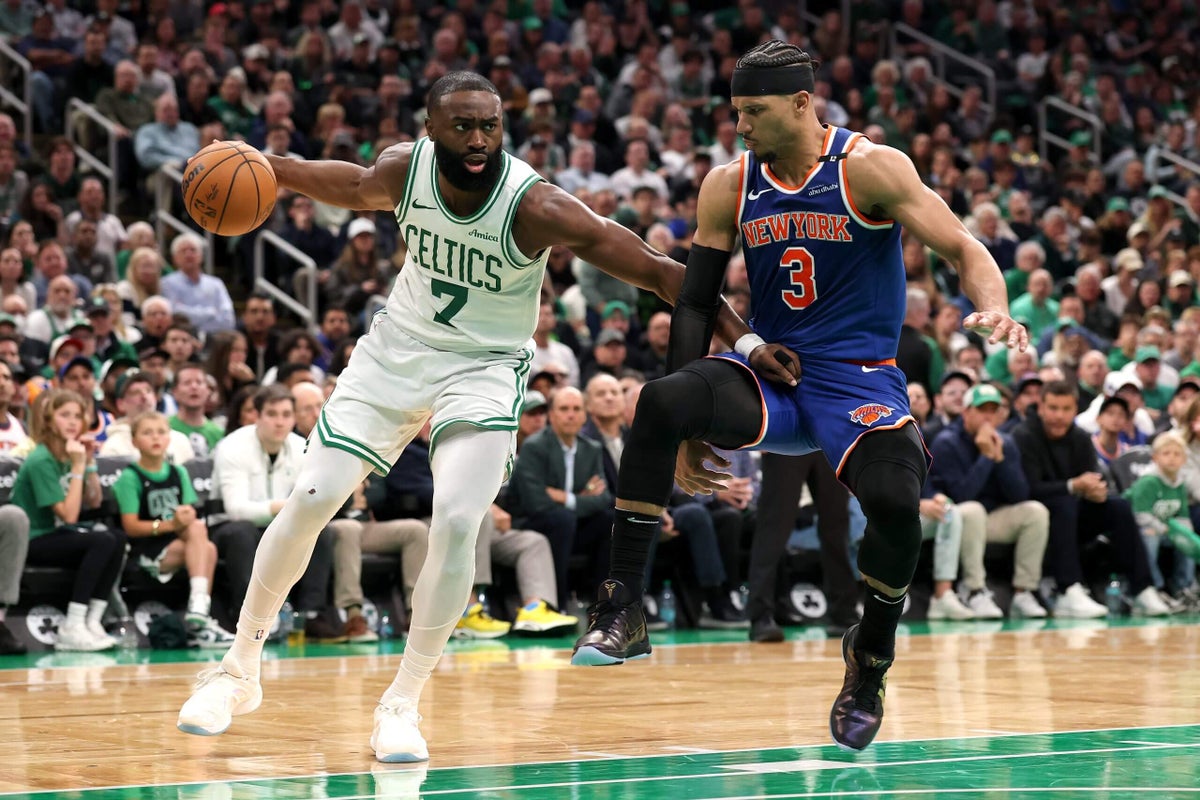
I traveled to seven NBA playoff games in five cities over the past two weeks, and if there was one word I heard over and over again in talking with coaches, execs and players, it was” physicality.”
Multiple coaches have mentioned physicality during these playoffs; Minnesota’s Chris Finch the day after Game 1 against Golden State, Cleveland’s Kenny Atkinson following Game 1 against Indiana and Denver’s David Adelman after Game 6 against the Clippers are a few that come to mind, and I’m sure those aren’t the only ones. However, that’s just scratching the surface.
Advertisement
In moments not meant for public consumption, the wording has been more strident. There’s a feeling that too much is being let go, that it’s a dangerous recipe for something bad to happen on the court and that the refs need to reel it back in.
One thing that has struck me, however, is that the coaches, execs and observers feel a lot more strongly than the players. My admittedly non-comprehensive survey of players has been met with, if not a shoulder shrug, a notion that they don’t care about physicality as much as consistency.
“Honestly, I feel like the postseason is always physical,” the Clippers’ Norman Powell said after their Game 6 win over Denver. “They let things slide, they let you play and they let the best of the best win.”
“It’s hard to compare,” Minnesota’s Rudy Gobert said before Game 5 of the Wolves’ first-round series in Los Angeles. “But (this year) does feel, yeah, it’s very physical. I think it’s always been about the consistency. … The games have been physical; we can feel the intensity.”
Obviously, “physicality” can have a lot of elements, and not all of them necessarily favor the defense. Is more contact being allowed around the basket? Are officials giving screeners more leeway to throw an extra limb into a defender? Are they allowing defenders to ride ballhandlers up the court or bear-hug cutters? Is it a free-for-all under the glass once a shot goes up?
With those questions in mind, two plays from Game 1 of the Cavaliers-Pacers series stood out. The first was this no-call on Jarrett Allen’s dunk, where he caught a high elbow to the chest from Myles Turner en route to the rim, fell awkwardly and didn’t seem to be himself the rest of the night.
The second, more subtle one, was this eight-second violation call against Ty Jerome. It was the first eight-second call I can remember that didn’t involve a deflection or a brain cramp. Aaron Nesmith was able to keep a forearm on Jerome and maintain contact as he came up the floor, and Jerome just couldn’t get very far.
I’m not picking on Indiana; these were just two plays I wrote down in my notes while watching Game 1. I’m sure some plays went against the Pacers that their fans will gladly remind everyone about. I also flagged that Jerome-Nesmith play because I’ve heard complaints that the level of contact being permitted against dribblers advancing upcourt has been particularly noticeable.
Advertisement
At any rate, one can imagine all of those elements impacting the game in different ways, but much of the vitriol I’ve heard is focused on shooting fouls around the basket, or the lack thereof. Yes, shooting fouls are down, and I’ll get into that more in a minute. But first, I’ll note that it seems an odd tack for the league to take: If it’s worried about too many 3-point attempts, allowing more contact in the paint would theoretically make paint 2s harder and thus incentivize more 3-point shots.
Alas, that doesn’t seem to be how it works in the yin and yang of the NBA, where every action has an equal and opposite reaction. Maybe if paint 2s are tougher to finish, teams have to send less help from the corners, and thus it becomes harder to generate catch-and-shoot 3s. More to the point, the league-wide 3-point rate in the postseason is slightly down from the regular season (41.3 percent of attempts from 42.1 percent entering Wednesday’s games), perhaps in part due to the Orlando Magic’s draconian efforts to eliminate Boston’s 3-point game.
But I’m burying the lede a bit, because the 3s are a second-order effect of physicality, and we’re looking for the first-order effects.
In an average NBA season, slightly more than half the playoff games will be in the first round (there are 15 total series, and we’re already done with eight of them), so it’s a good time to examine the playoff trend line. We have a few second-round games thrown in for good measure. (All data is entering Wednesday’s games.)
Here’s the thing: I can’t really find anything in the numbers to suggest that these playoffs have been any more physical than the last two. Fouls and free throws have both increased from the regular season. Those alone are a bad indicator, as they can be skewed by late-game take fouls (hello, Thunder fans) and hack-a strategies (take a bow, Mitchell Robinson and Steven Adams), both of which are historically more common in the playoffs.
Advertisement
However, the big picture isn’t that different. This postseason doesn’t seem unusual. If anything, it’s the last three postseasons that are the outlier, compared to everything else that came before it. These last three playoffs have featured much worse 2-point shooting and much lower true shooting percentages compared to the regular season of the same year and stable 3-point rates. That’s in stark contrast to the ones before them, which featured more whistles, more 3-point attempts and no decline in offensive efficiency from the regular season.
To map out what those differences look like from year to year, I’ve made the following chart that shows the changes in some of those stats from the regular season to the postseason. Also, to make the complicated task of subtraction easier, I created a new stat called “THE DIFF,” which is simply the difference between the two numbers. I’m pretty sure this has never been attempted before in the history of mathematics or by any regional television network.
The “Diff”: Regular season to playoffs
|
Year |
Off Eff |
Pace |
FTr |
2Pt% |
|
2025 |
-1.2 |
-4.6 |
1.7 |
-1.9 |
|
2024 |
-1.7 |
-5.9 |
-0.3 |
-1.0 |
|
2023 |
-1.3 |
-3.0 |
-1.8 |
-1.6 |
|
2022 |
-0.8 |
-2.7 |
2.2 |
-0.6 |
|
2021 |
2.0 |
-3.1 |
0.9 |
-0.3 |
|
2020 |
0.7 |
-2.7 |
2.1 |
0.5 |
|
2019 |
-0.4 |
-3.1 |
2.5 |
-1.8 |
|
2018 |
0.3 |
-1.9 |
1.5 |
0.3 |
|
2017 |
2.5 |
-1.5 |
1.4 |
1.0 |
|
2016 |
0.3 |
-2.8 |
0.7 |
-1.3 |
|
2015 |
-0.3 |
0.5 |
2.3 |
-1.0 |
As you can see, offense has declined in the playoffs during the last four years, and it might surprise you to learn that’s a new phenomenon. From 2015 to 2022, free-throw rates went up, and 2-point percentages held steady in the playoffs, but the last three years have seen it become much harder to convert inside the arc. This season’s gap is the biggest on the chart, and, in nominal terms, the 52.5 percent mark on 2s is the lowest since before the pandemic.
There’s another thing going on here that isn’t getting as much attention: Holy Mike Fratello, have these games become slow. The pace factor across the last two postseasons has dipped by over five possessions per game per team, which is even more than the usual “things slow down in the playoffs” we saw in all the previous postseasons.
That, perhaps, solves our “physicality” problem, or at least the perception of it. Those types of games naturally see more contact than end-to-end transition play — Game 1 of Boston-Orlando had only 90 possessions a side, for instance. Of course it was physical. In today’s postseason, as former Grizzlies legend Zach Randolph once proudly declared, “We in the mud.”
That said, playoff games were even slower last season, even with Indiana making the conference finals. You can probably blame some of that on the Dallas Mavericks slamming the brakes to let Luka Dončić cook; they played a league-high 22 playoff games. But the Mavs weren’t notably slower than, say, the Knicks, Wolves or Celtics.
I’m not on the floor playing, so I’m not going to tell you definitively that the physicality hasn’t changed in the 2025 postseason relative to previous ones. All I’m saying is that it’s hard to find concrete evidence if you go looking for it. Statistically, these playoffs look virtually identical to the last two, and if you’re searching for a turning point, it’s in the 2023 playoffs, not this year’s.
Advertisement
Whether the change is officiating, schemes or some combination of the two, it does seem to have had the side effect of likely increasing physicality in recent postseasons. That’s because it has slowed the game down considerably and hurt 2-point shooting percentages.
Whether that’s a good thing or a bad thing, we’ll put off for another day. But it’s definitely a thing.
(Illustration: Demetrius Robinson / The Athletic; top photos: Ethan Miller, Maddie Meyer, Tayfun Coskun/Anadolu / Getty Images)



